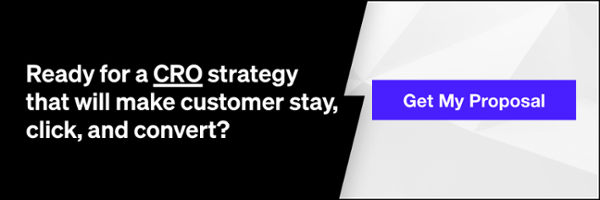Not all websites are made equal. Some websites are simple, logical, and easy to use. Others are a messy hodgepodge of pages and links.
Bad navigation is an especially common problem area. We’ve all struggled to find things on disorganized websites without any logical structure. It feels hopeless, like being lost in a maze with no map.
Just because a website looks awesome doesn’t mean that it is easy to navigate. You can have a beautifully designed website, but if it is impossible to use, what’s the point? No one is going to sign up for a newsletter or buy any products. Search engines will be confused, too.
Designing and developing good navigation is the most important part of building your website. If a website is like a house, navigation is the foundation. Just like the structural foundation of a house, you must start by building the structural foundation of your site navigation first.
It can be hard to design user-friendly navigation, especially on huge websites. Just remember that simplicity is always the best approach. Also, before your website gets too big, think about how you want users to navigate around it — or things will quickly get disorganized.
Here are a few tips on how to create good website navigation, turning a negative user experience into an awesome one.
Tip #1: Make Sure The Navigation Is Clear And Legible
In most cases, stay away from narrow fonts and scripts. They’re just too hard to read, especially on a small scale. Here are two examples:
- Dancing Script
- Pragati Narrow
The minimum text size on your site’s navigation should be 12 pixels. Anything smaller and your users will be squinting, and search engines might flag it as suspicious. It’s always a good idea to test your website for legibility on mobile devices. Be sure the navigation is easy to read.
Navigation should also be divided into clear categories, with only the most important links on your main menu. If your website has a lot of pages, use second-level or third-level dropdown menus.
Use accurate navigation titles. There’s nothing more frustrating than digging around on a website and getting lost because the titles on the navigation links were confusing, vague, or too similar to other titles.
Use actual text instead of icons for menu items. It’s good for SEO and easier for your users. Search engines can read text to figure out the most important parts of your website, which helps visitors find you, but search engines can’t read icons. Too many icons will also slow down your page speed, which is bad for SEO. Visitors might not be able to load the images quickly either. Text is always the best way to go.
Be sure that there’s a clear contrast with the colors used for your navigation menu. You can use dark text on a light background, or light text on a dark background, but never dark-on-dark or light-on-light.
You may also want to try different colors on your navigation links to see what users respond to. Here’s a good example why: In 2014, Google earned an extra $200 million per year by switching to a new shade of blue on advertising links that people clicked on more often.
Tip #2: Understand Human Behavior, Especially When It Comes To Interacting With Different Devices
People naturally look for patterns and gravitate toward what is comfortable for them. If they can’t find the menu easily, or figure out how to navigate between pages on your website, they won’t stay long.
In this day and age, people are used to interacting with websites in a certain way. Try not to make things difficult for them. The good news is that basic navigation patterns haven’t changed much over the years.
Related: Empathy: The Key to Great Design
For example, desktop users expect to see a prominent, clearly-labeled menu on the top or the side of the page. Mobile device users expect the menu to be integrated in the app, or the responsive page design.
As more people switch from desktops to mobile devices, more websites are switching to a navigation menu that is far less obvious.
On mobile devices, there has been a wide adoption of the “hamburger menu,” a three-lined icon that users click on to expand the menu.
Hiding your navigation menu behind a hamburger button can be hard to find, which is why some apps and websites opt instead for side bars, dropdown menus, or a tab bar at the bottom of the app screen.
Tip #3: Integrate Search Functionality With Your Site
When all else fails, the search bar is the saving grace of navigation. Search functionality is also a great idea for websites where users will be looking for something specific instead of clicking through links.
Taking steps to improve your website’s search functionality can help improve conversion rates. It can lead to happier shoppers who come back again and again. Even so, the search bar is often neglected.
There are a few things you can do to make it stand out. Put text inside the box, such as “Search Here,” or an icon of a magnifying glass, to help your visitors figure out that it is a search bar instead of a newsletter sign-up form. You can also draw attention to your search bar by offsetting it in a different color from your site’s color scheme.
The functionality of the search results page is also extremely important. Users expect their product searches to be filterable. It is no longer enough to have minimal options like size, color, and style. Users also want to be able to search for new items, sale or clearance, and more — and filter out categories they don’t want to see.
Tip #4: Breadcrumbs Make It Easier For Users To Understand How Your Site Is Organized
Breadcrumb trails are like a map. They are text links, usually at the top of a page, that might look like this: “Home > Books > Fiction > To Kill a Mockingbird.” They’ve been used in web navigation since the 1990s.
Breadcrumb trails are popular for a few reasons. They’re user-friendly, take up very little space, help users keep track of their location, and enable one-click access to other important parts of your website.
Breadcrumb trails are also beneficial for SEO. They are an excellent way to get keywords onto a page. These keywords tell search engines which pages on your website are most important, which makes it easier for the search engine to understand the structure of a website.
Tip #5: Include A Sitemap On Your Website
A sitemap is like a directory of your website. It is a page with text links to the most important parts of your website. Sitemaps help your users navigate your website, but they are just as important for SEO. They give search engine crawlers an easy way to find pages on your site.
Related: Developing Websites with Marketing in Mind
There are two types of sitemaps: HTML and XML, and you may want both. An HTML sitemap helps a person navigate your website, with links to the most important parts of your website. An XML sitemap helps a search engine navigate your website, with links to all of the pages and information about how frequently the content is updated.
Tip #6: Prove It Works
Before you go live with any changes, prove your navigation works. Get other people to test out your website for Quality Assurance (QA) and give feedback. This helps avoid costly mistakes and unhappy users.
After you go live, you’ll want to closely monitor how many of your users are doing what you want, such as buying a product or signing up for a newsletter. Conversion Rate Optimization (CRO) is a popular approach to converting more visitors into subscribers and customers.
CRO typically involves A/B testing different menu formats by randomly offering users two different versions of your navigation and picking the most effective one. You’ll probably want to play with the order of your links to determine which pages on your website bring in the most customers. These are the pages you’ll want to focus on improving.
If you are not sure why your users are dropping off from your site in their journey — or where they are getting lost — you can try recording how they are using your website. This is also called “behavior tracking” or “funnel analysis.” It offers a wealth of data about how people are interacting with your website, helping you determine where customers are getting confused so you can fix conversion problems.
Visual Website Optimizer (VWO) is an ideal platform to bring together your conversion optimization strategy. It’s an all-in-one solution for A/B testing, visitor recordings, tracking goals, funnels, cross-device and cross-browser testing, user research, and more. VWO mines your data looking for insights that have the maximum impact on business objectives — be it sales, sign-ups, or page views — which helps business leaders make data-driven decisions that expedite growth.



















